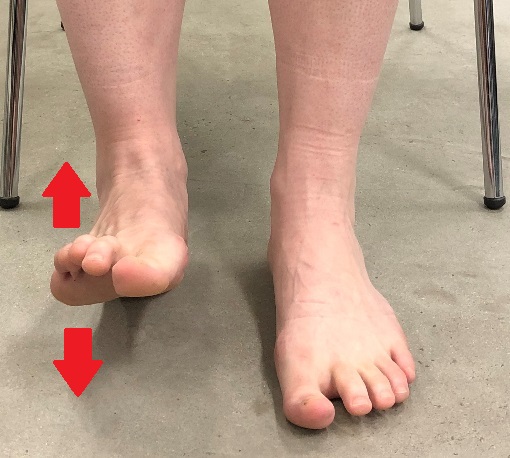
Plane Trip? 5 Physio Tips on How to Survive
As physiotherapists, Pivotal Motion wants to give our travel advice through our Top 5 Physio Tips on How to Survive Long Plane Travel with low back pain to help this holiday season go so much smoother.
At Pivotal Motion, we love that our patients are prolific travellers. At times, travel is associated with injury and lower back pain. For those with lower back pain, the idea of a sitting on a plane for hours on end can be daunting. But fear not because there are ways to make this challenge a lot easier.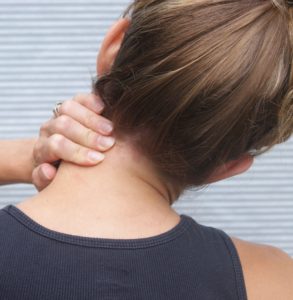
Tip 1: Use supportive equipment on the plane
Prolonged sitting can increase the risk of exacerbating lower back pain as it puts a considerable amount of stress on the discs and joints of the lumbar spine. Although we highly promote our patients to have conscious awareness of their postures and sit as upright as possible, we are only human and as good as we try, we can’t constantly maintain a neutral posture 24/7. This is when we recognise our limitations and the use of extra support becomes necessary. We therefore recommend the use of ergonomic equipment such as a back brace or a lumbar support roll. This will act to help stabilise a correct posture, act as a reminder to sit up when we do start to slouch and reduces the risk of flaring up a disc bulge.
Tip 2: Get up and move up and down the plane!
Wearing/using back support ensures that while we’re sitting, we’re maintaining a good posture but this still does not beat moving frequently. We recommend getting up from your seat and walking up and down the aisle a couple of laps per hour for long haul flights and every 30 minutes for short haul flights. General movement ensures that we are consistently pumping blood around the body which helps flush pain and inflammatory chemicals away from the back, effectively decreasing pain. In addition, the contraction of the leg muscles whilst walking up and down the aisle can also help override pain stimulus.
Tip 3: Even while seated, continue movement.
If you are unable to readily get up and move for whatever reason, it is important to still maintain movement while seated for the same reasons as tip 2. It ensures continued circulation and muscular contraction which is good for tissue healing and pain relief.
Here are some great exercises to continue movement and enhance posture:
Ankle Pumps:
In sitting, point your foot up and down and repeat 20 times each leg per hour in a long haul flight and every half hour for short haul flights.

Ankle pumps
Seated Marching:
In sitting, lift one knee up at a time and repeat 20 times each leg. Do this each hour during long haul flights and every half hour for short haul flights.
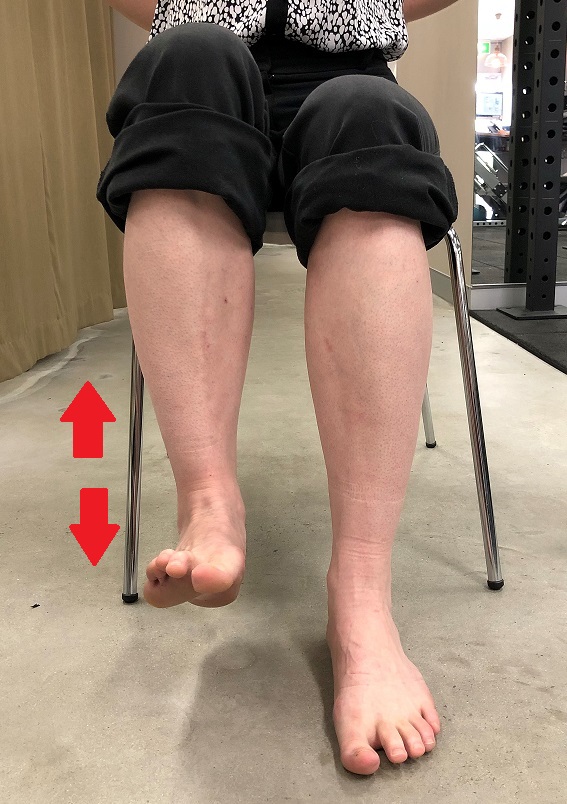
Seated Marching
Shoulder Rolling:
Rotate the shoulders forward ten times then backwards ten times. Do this each hour during long haul flights and every half hour for short haul flights.
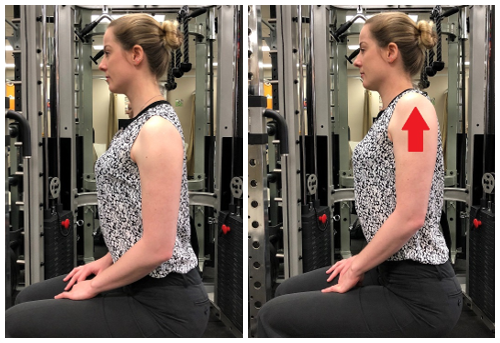
Shoulder Rolling
Pelvic tilting:
Move forward to the edge of your seat and place your hands on your hips.
While keeping your upper back nice and still, alternately flatten and curve your lower back. Another way of thinking of this exercise is imagining your pelvis as a bowl of water and then tilting this bowl of water backwards and forwards. Proceed with caution with this exercise and try not to push past limits of pain.
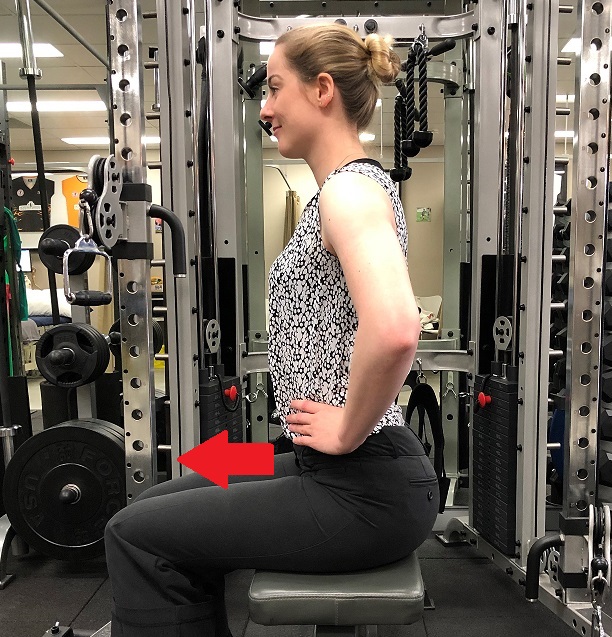
Lower back arched (anterior pelvic tilt)
Tip 4: Stretch, stretch, stretch
This tip is along the same lines as continuing movement whilst on the plane. It can even be timed after walking up and down the aisle towards one end of the plane! The leg muscles can get tight during a plane ride. Therefore, doing a 30-45 second stretch in the calves, hamstrings and glutes is highly recommended.
Please don’t stretch through the pain. Although stretching is encouraged it is not to increase pain.
Tip 5: Drink plenty of water
Hydration is key! Drinking water has been proven to help reduce back pain. This keeps the discs between our vertebrae hydrated and replenished. This reduces the risk of injury as it keeps the discs from stiffening up from lack of water. This means that the discs can do their job of taking the compressive load of our body weight. Drinking plenty of water also helps improve circulation which will help flush away inflammatory and pain chemicals.
For more information on the Top 5 Physio Tips on How to Survive Long Pain Travel with lower back pain, don’t hesitate to see our friendly and experienced team at Pivotal Motion. You can book the physiotherapist Brisbane trusts online using the link below or by calling our friendly exercise physiologists on 07 3352 5116.


